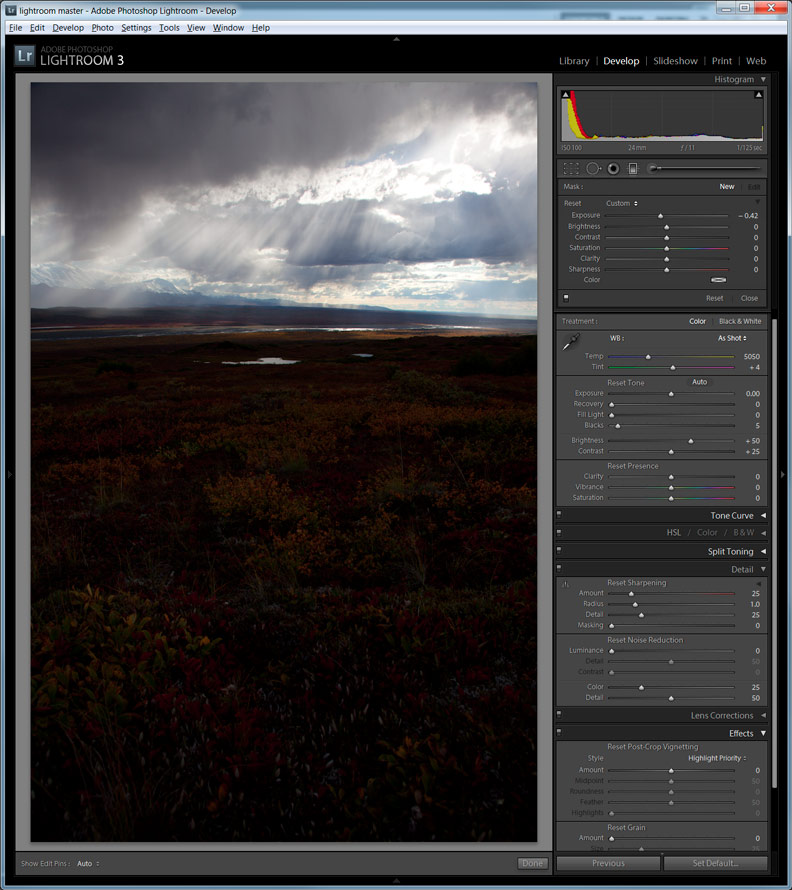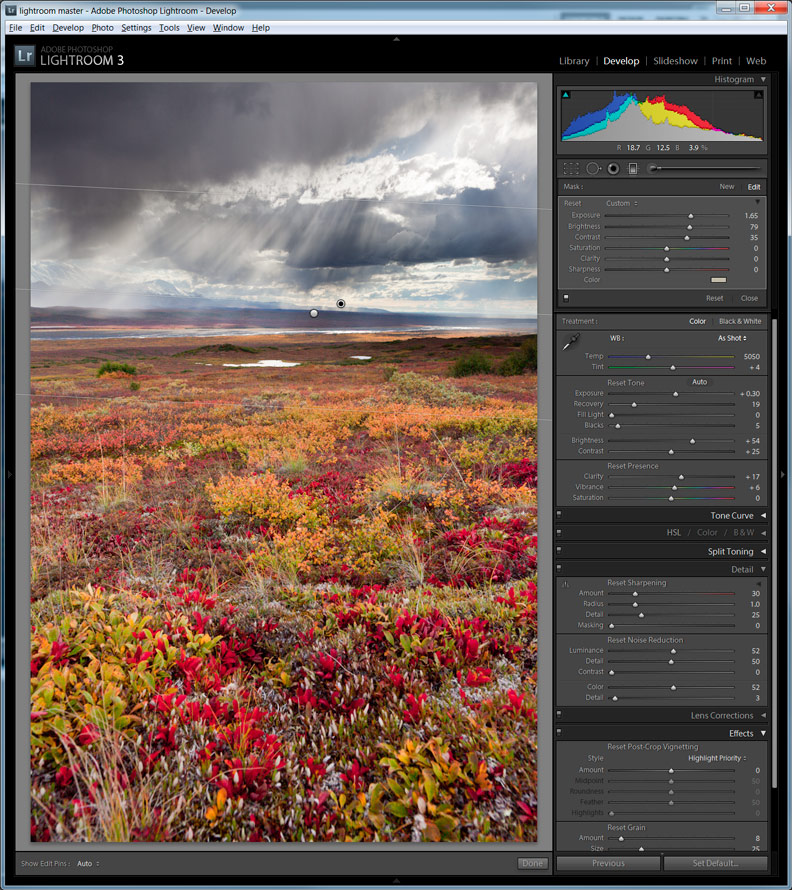My digital workflow always moves towards simplification whenever possible. Taking thousands of photos a year, and needing to move them from a flat, RAW state, to a processed version ready for a stock photography sale takes time. If there is one lesson universal to age, it is that time takes on a more premium value. At this stage in the capture and post production process of a digital file, great leaps and bounds have been made in both camera sensors and post production software.
The image below is a good candidate to illustrate my approach in shooting a landscape whose end state requires taking Lightroom experience into the field. Any experienced landscape photographer knows that “sky control” is a fundamental factor for balancing tonality in an image. In the days of film, we all used split graduated neutral density filters, and applied the necessary style to the end of the lens given the demands of the scene. While these are still of value today, I use them quite infrequently. This is so because the quality of low ISO digital files and the local adjustments possible in Lightroom make the post production process fairly simple, and rather dramatic.
In this scene, I exposed for the sky as the dramatic clouds whirled over the McKinley river bar in Denali park. The colorful tundra in the foreground, is rendered nearly black. However, with a split grad filter in Lightroom applied (approximately 2.5 stops), the foreground comes to life. This degree of exposure change does introduce some noise in the shadows, but with noise reduction and a slight grain value applied, it resolves nicely.
One could have applied that 2 stop split grad in the field, but there is not always time, and conditions are not always conducive to doing so. When dynamic clouds are involved in a landscape scene, my experience tells me to shoot and shoot fast because the clouds change quickly and the once pleasing light play on the land can vanish in no time.

Original RAW capture, with the exposure made for the highlights in the clouds, rendering the foreground nearly black.

The same scene with approximately 2.5 stops of exposure correction to the foreground with a split grad in LR. Canon 5D Mark II, 24-105mm f/4L IS, (24mm), 1/125 sec @ f/11, ISO 100.






